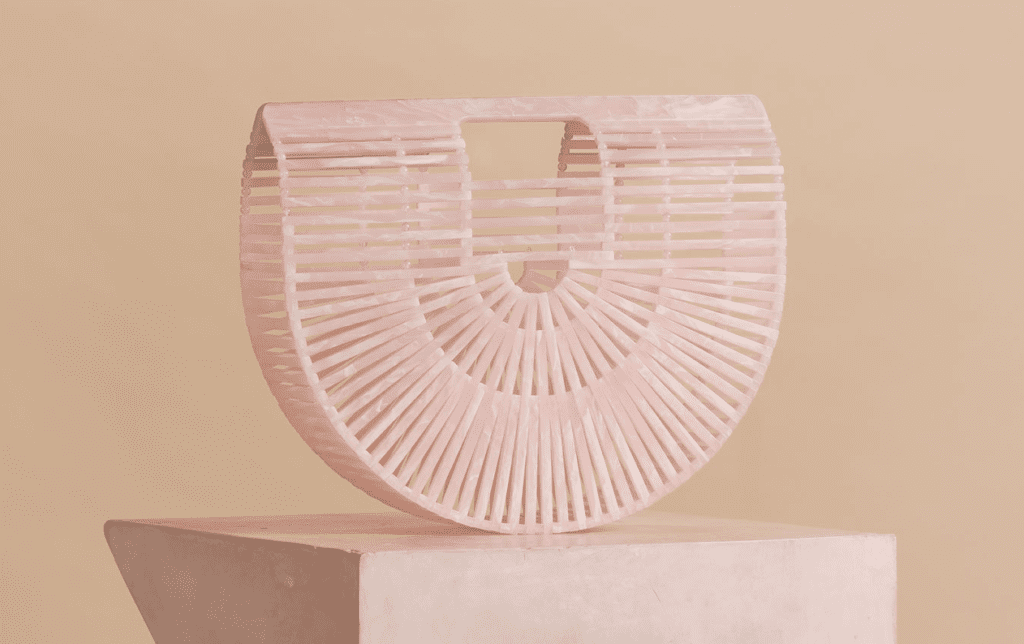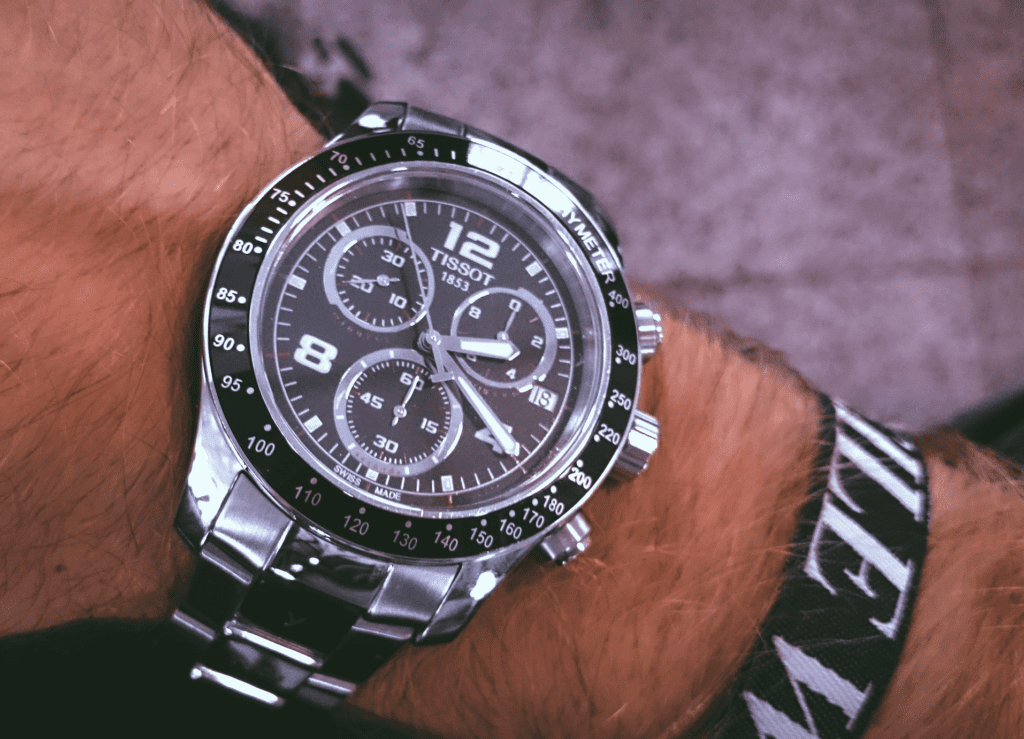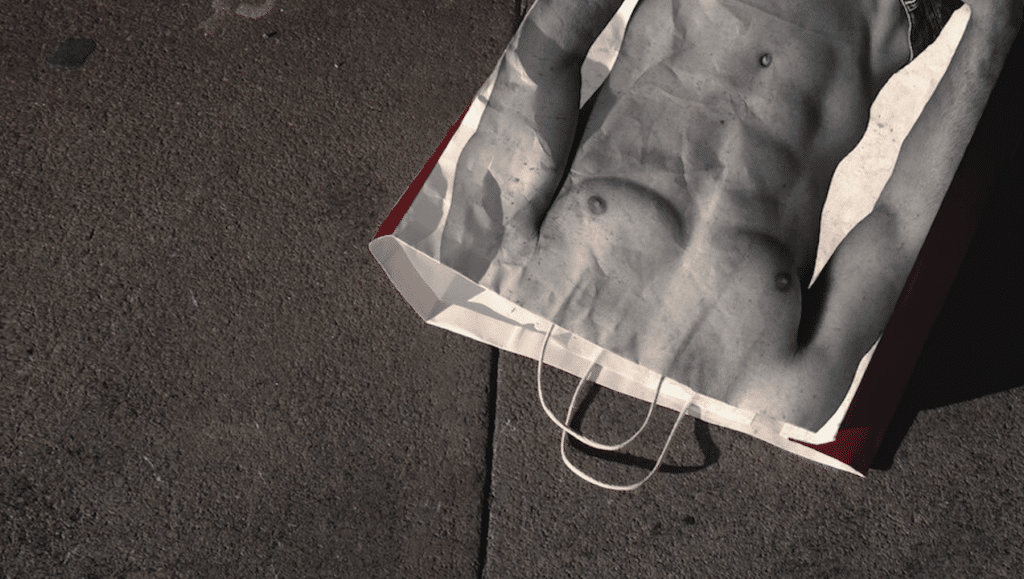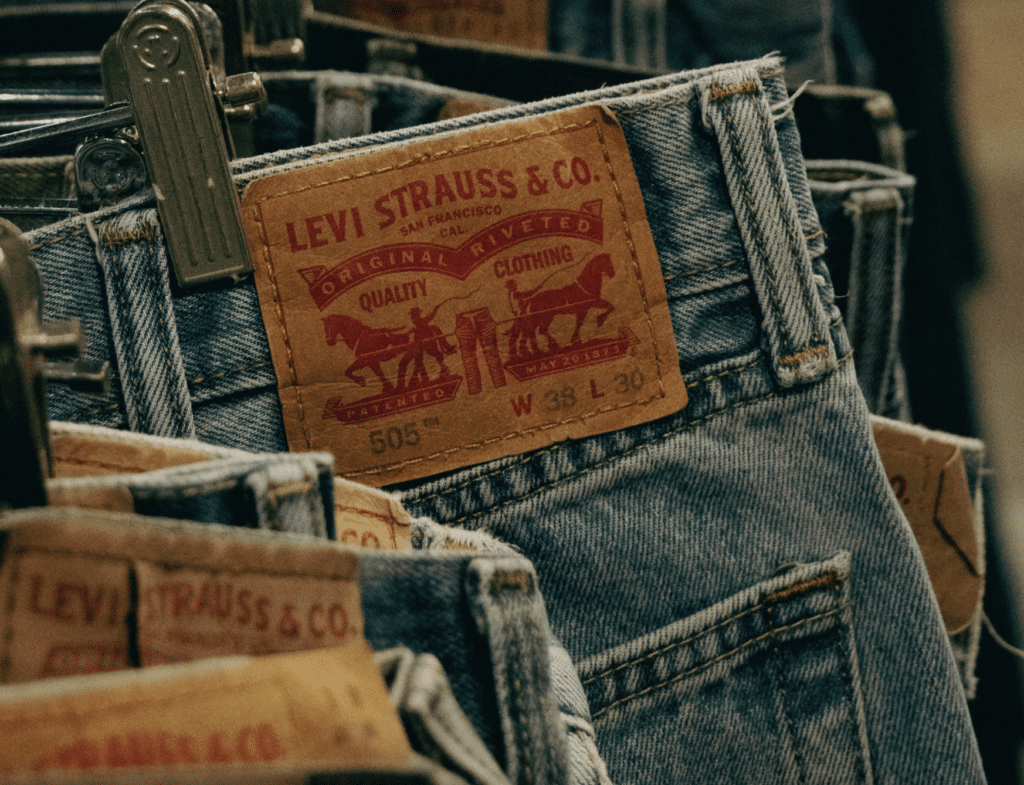Cult Gaia’s Instagram-friendly Ark bag is proving to be one of the most contentious affordable “it” bags on the market. While the Los Angeles-based accessories brand is in the midst of a rather ugly legal fight with notorious knockoff artist Steve Madden, it is simultaneously facing off against the U.S. Patent and Trademark Office (“USPTO”) in a less public – but just as combative – battle over the protectability of the $150-plus bag that a USPTO examining attorney has called “a mere iteration or appropriation” of an already-existing Japanese design.
Early this year, USPTO examining attorney Bernice Middleton responded to Cult Gaia founder Jasmin Larian’s July 2017 trademark application for the Ark bag with a second strongly-worded office action, refusing to allow the application to proceed to the next phase of the pre-registration process. According to Middleton’s response, Cult Gaia may have “received recent notoriety” for its popularization of the half-moon shaped bamboo bag, and experienced “high sales [for a season],” the bag, itself, “is not new or distinct.” With that in mind, the likelihood that consumers will associate the design with a single source – which is at the core of a trademark or trade dress’ function and which is required for trademark protection – is highly unlikely.
In addition to lacking the necessary distinctness to enable consumers to associate the design of the Ark bag with a single source, the bag is functional, per Middleton, and lacks elements “added to or different from the original style [of the bag] to create a source indicator for the goods.” This is significant as functionality is “an absolute bar to registration” with the USPTO.
On the heels of Middleton’s second preliminary refusal, counsel for Larian called foul and filed a 1,200-plus page response early this month, asserting that the application should move forward in the registration process, as the bag is not functional, and has, in fact, acquired the necessary distinctiveness to enable it serve as a trademark.
Addressing Middleton’s qualms with the protectability of the bag, Larian’s counsel asserts that “the Ark Bag trade dress has become distinctive as a result of [Cult Gaia’s] longstanding and substantially exclusive use in U.S. commerce, [the brand’s ] widespread promotion of and [the] unsolicited media attention [dedicated to] the Ark bag, significant sales, and consumer association between the Ark bag and [Cult Gaia] or a single anonymous source.”
According to Larian’s filing, “The examiner’s refusal on the bases of functionality and non-distinctiveness appears to be grounded almost entirely upon the unsupported notion that the Ark bag design is an ‘appropriation’ of a ‘well-known’ category of [Japanese] bags.” Citing a declaration that Cult Gaia solicited from “fashion industry and handbag expert” Aneta Genova, the response goes on to assert that despite the USPTO examiner’s assertion, the Ark bag is not a mere replication of “a distinct Japanese bag well-known in the accessories industry.”
Instead, Larian’s counsel states that “Ms. Genova’s investigation does not support the contention that the [Ark] bag has Japanese origins” at all, an assertion that arguably stands at odds with what Larian, herself, told WhoWhatWear in 2016 “about what inspired the now-famous bamboo bag.” The accessories designer told the fashion site, “It’s a reproduction of a Japanese bag that was popular in the ’40s. I used to collect them and felt like the world and women needed this.”
Nonetheless, as Larian’s counsel aptly notes, even if the design of the hot-selling Cult Gaia bag is derived from a traditional Japanese design, such a lack of originality is not necessarily a death knell, as “novelty is not a requirement for trade dress protection under U.S. law.” As such, the filing asserts that “even if the Ark bag were a reinvention of a bag sold many years ago, it does not preclude [Cult Gaia] from acquiring trademark rights in its designer where, as here, there is no evidence that the bag was sold in any commercially significant manner in the U.S. at the time [Cult Gaia] first started promoting and selling the Ark bag.”
As for the array of lookalike bags that are currently being offered up for sale by companies that are not Cult Gaia, which the USPTO examiner pointed to in her office action, Larian’s counsel asserts that those bags only started being offered after Cult Gaia introduced its Ark bag. “The overall design of the Ark bag was not commonly used or traded in the U.S. commercial marketplace in or around 2013 when Cult Gaia first started offering the Ark bag,” the response states. Instead, it was “only after the Ark bag was deemed an ‘it’ bag did these offers for bags imitating the Ark bag begin.”
The USPTO examiner will now respond to Larian’s filing either by enabling it to move to the next stage of the pre-registration process (publication) or by issuing a third and final refusal, which Larian could (and likely would) appeal to the USPTO’s Trademark Trial and Appeal Board.











